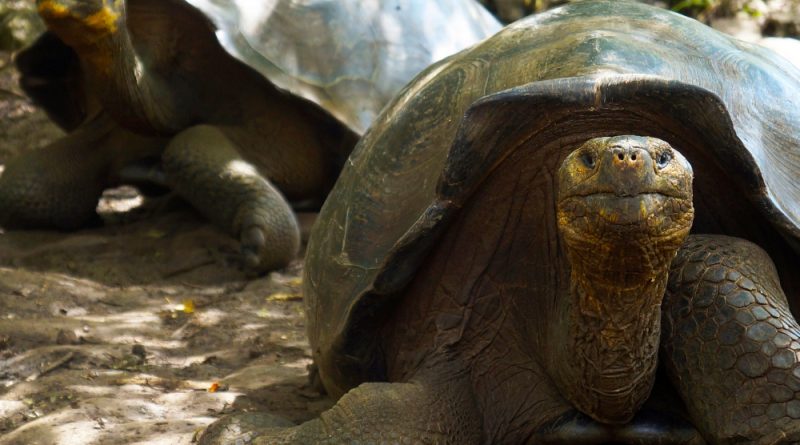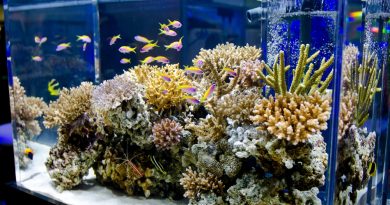How long do turtles live?
“150, bro! And I’m still young!” That’s what Crush, a sea turtle from the movie Finding Nemo, replies to the protagonist Marlin when asked about his age. Outside the magic of animation, is it really possible for this type of animal to reach such an age? What is the lifespan of a turtle?
Our friendly shelled friends have a longstanding reputation for being animals that surpass centuries. Learn about the real life expectancy of turtle species and understand how they can reach such significant ages with the following content!
Centenarian Beings
You’ve probably heard that turtles are the longest-living terrestrial animals. This statement is a half-truth, as scientifically, turtles are not terrestrial animals. However, it is common for us to immediately associate creatures with shells with the name “turtle.”
The fact is that both turtles and so-called tortoises and terrapins belong to the order Testudines. They all have a shell and a significant life expectancy, but when we talk about terrestrial Testudines, we are always talking about tortoises.
Interestingly, there are several turtles and terrapins that are named turtles. This is the case with the red-eared slider, which is a terrapin, and the Aldabra giant tortoise, the 190-year-old tortoise that stands as the oldest land-living animal.
There are some differences that mark the Testudines, but the easiest way to differentiate them is by habitat. Turtles are 100% aquatic and only come to land to lay eggs, while terrapins live in both terrestrial and freshwater environments. Tortoises, on the other hand, are completely terrestrial.
How long do they live?
As we can see, there are tortoises that reach ages that humans can hardly imagine. For instance, an animal born in 1832 would not see the Eiffel Tower open in Paris until it turned 57—the designer of the monument, Gustave Eiffel, was born in the same year and died in 1923.
However, turtles are aquatic animals, subject to conditions quite different from tortoises. Therefore, understanding how long a turtle lives can be a slightly different process than we imagine.
If you are looking for a surprise, don’t worry! The lifespan of a turtle can be as surprising as that of its terrestrial cousins. The thing is, there are various species of this animal, and each one has a maximum lifespan.
Of the seven species of sea turtles we know today, five of them can be found in Brazil. The only exceptions are the Kemp’s ridley turtle and the Australian flatback turtle. Among tortoises and freshwater turtles, there are 33 species in national territory.
Green Sea Turtle
Weighing up to 230 kg, the green sea turtle (Chelonia mydas) is one of the few marine species that is predominantly herbivorous in adulthood. Regarding how long a turtle lives, this is a friend for life: in the wild, they can live up to 80 years.
Loggerhead Turtle
Both the scientific and popular names of this species are funny, but the loggerhead turtle (Caretta caretta) also lives for a long time. But how many years can a turtle like this live? They can live up to 67 years, reaching lengths of 1.36 m and a weight of 180 kg in adulthood.
Leatherback Turtle
The lifespan of a sea turtle can vary widely, as we have seen. However, the number that is most surprising is that of the leatherback turtle (Dermochelys coriacea), the world’s largest sea turtle. This true giant can live up to 300 years, reaching up to 500 kg and 2.2 m in length.
Why do turtles live so long?
How many years does a turtle live, right? You’ve seen that the number can exceed expectations. After discovering this fact, it is very common for the question to arise: why can these little animals live for so long?
There are still many studies to be done to come to a conclusion about what really affects the lifespan of a turtle. However, scientists believe that several factors contribute to this longevity:
Cell regeneration: It is believed that the cell regeneration capability of these animals is extremely efficient, discarding dead cells more easily.
Immune system: The immune system of Testudines is also quite strong due to the presence of some special proteins.
Life cycle: The genetic characteristics of Testudines and how their organisms behave are factors that increase the longevity of these animals.
Other factors, such as life in captivity, can also influence the lifespan of these little animals. Animals raised in captivity, not subject to predators, marine pollution, or even predatory hunting, tend to live longer than free turtles.
So, you can also influence the lifespan of a turtle! Some actions, like properly disposing of your beach litter, can save a shelled life. Organizations like Projeto Tamar teach how we, humans, can make a difference!
Now that you know how many years turtles live, see if it’s worth adopting this pet and giving all the necessary care to this peculiar animal that lives a LOT!




